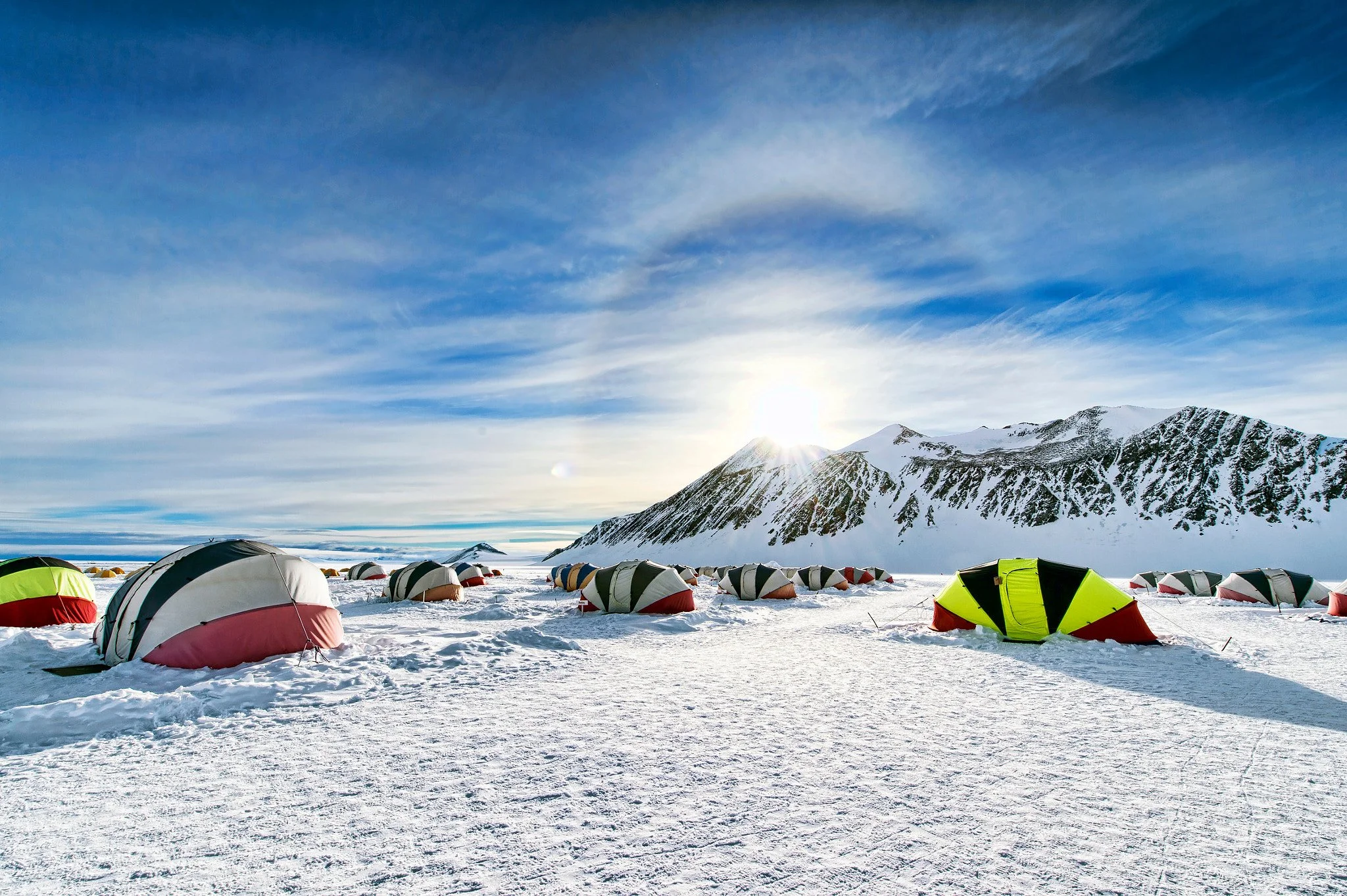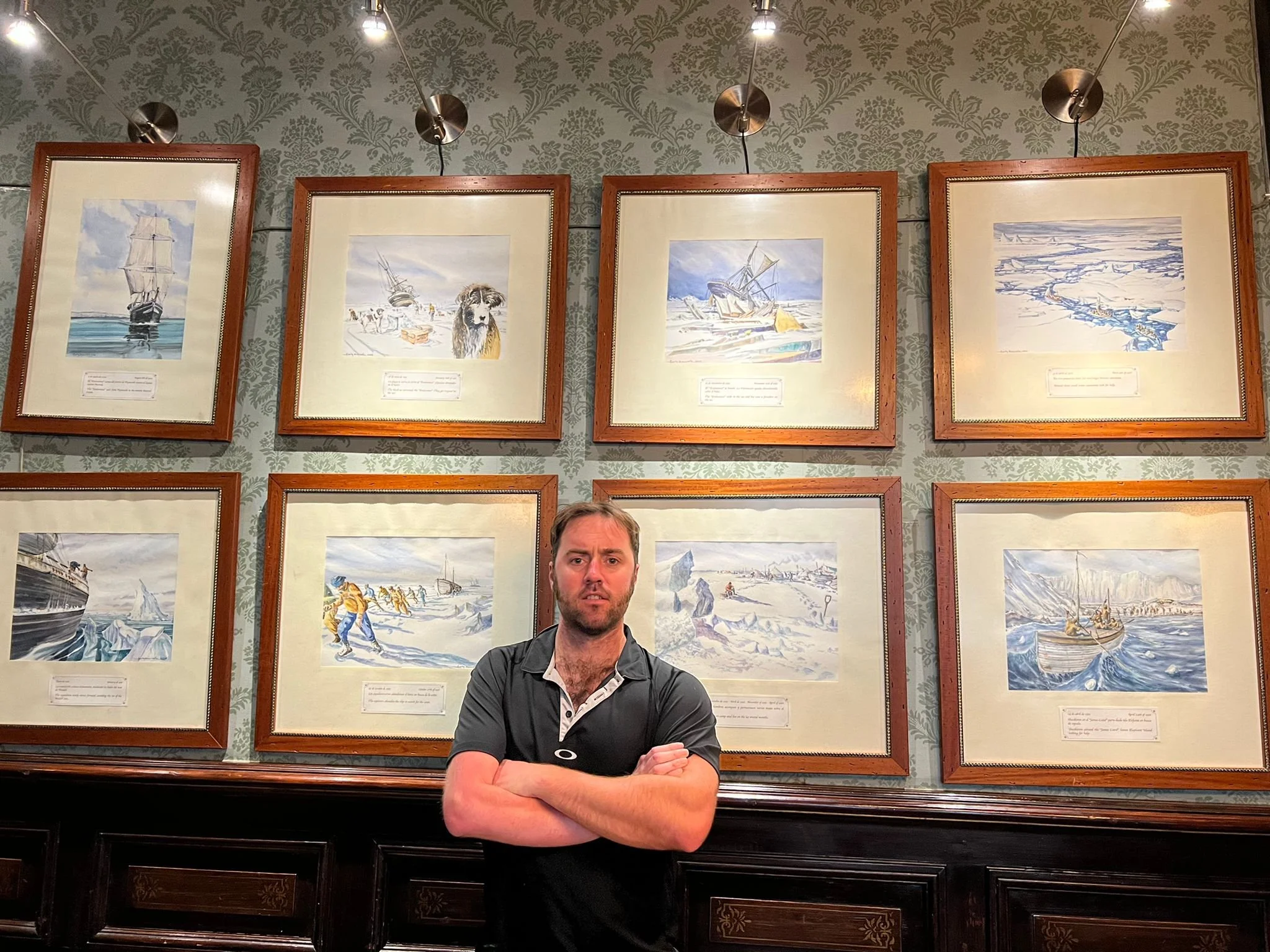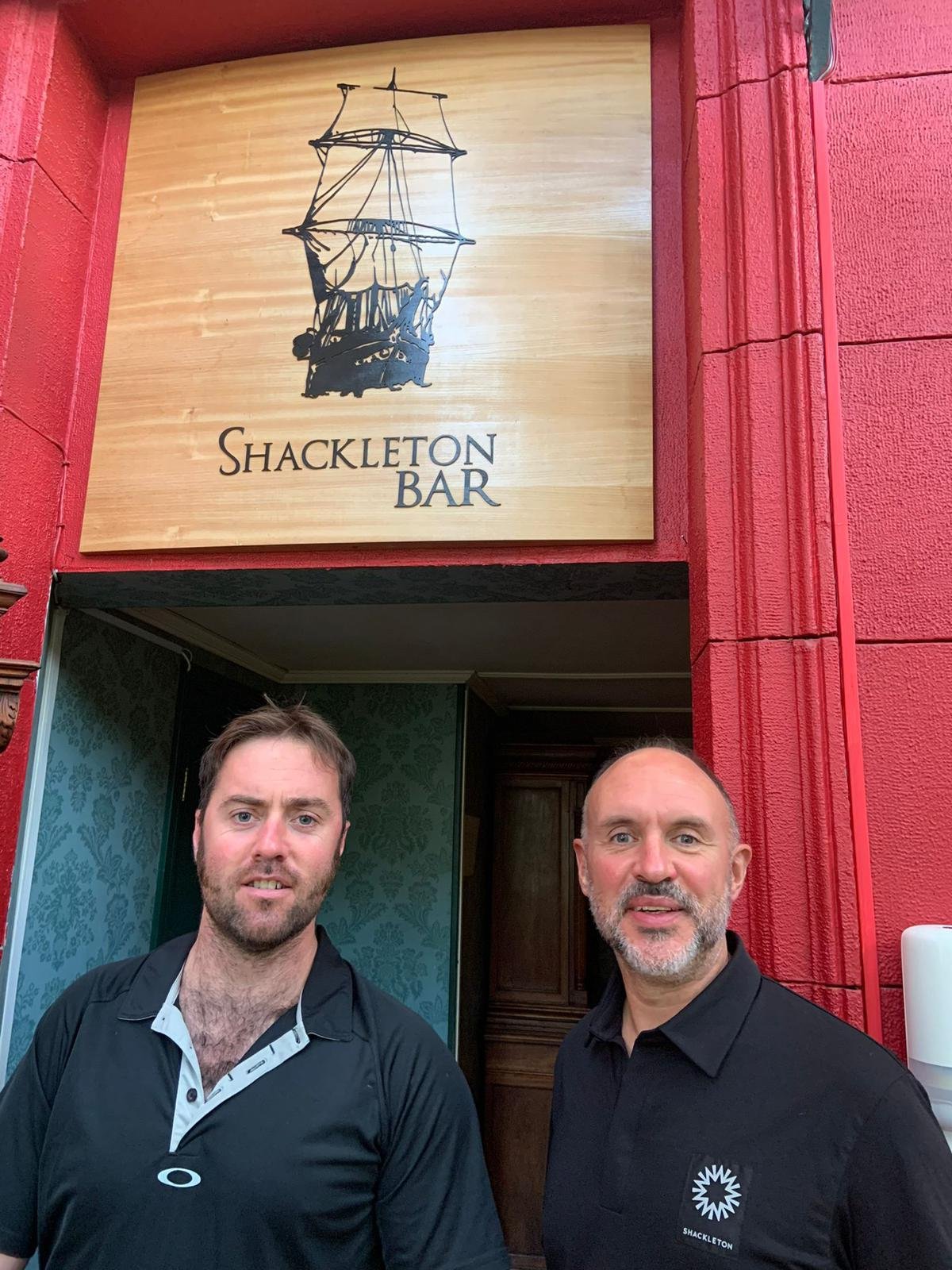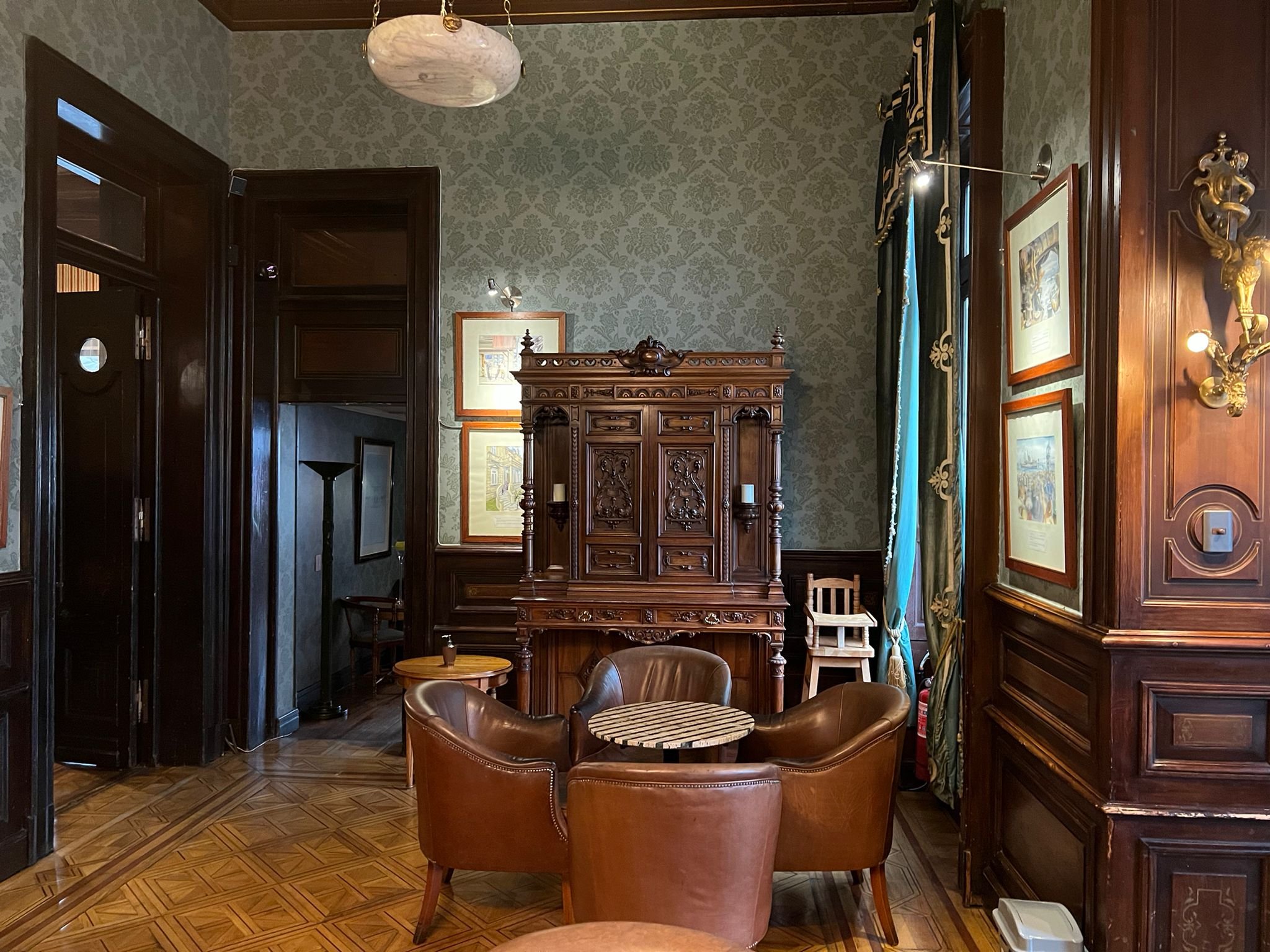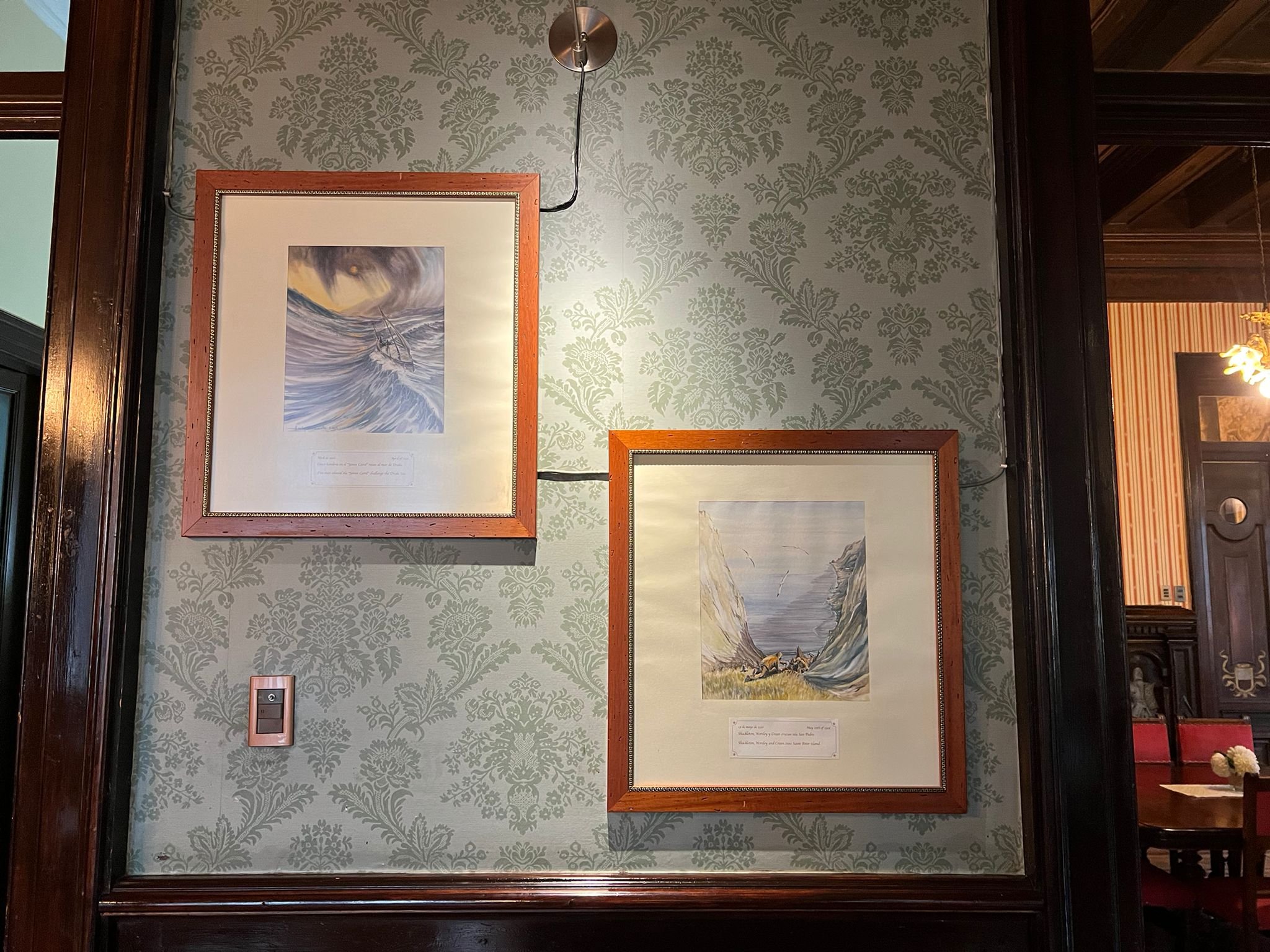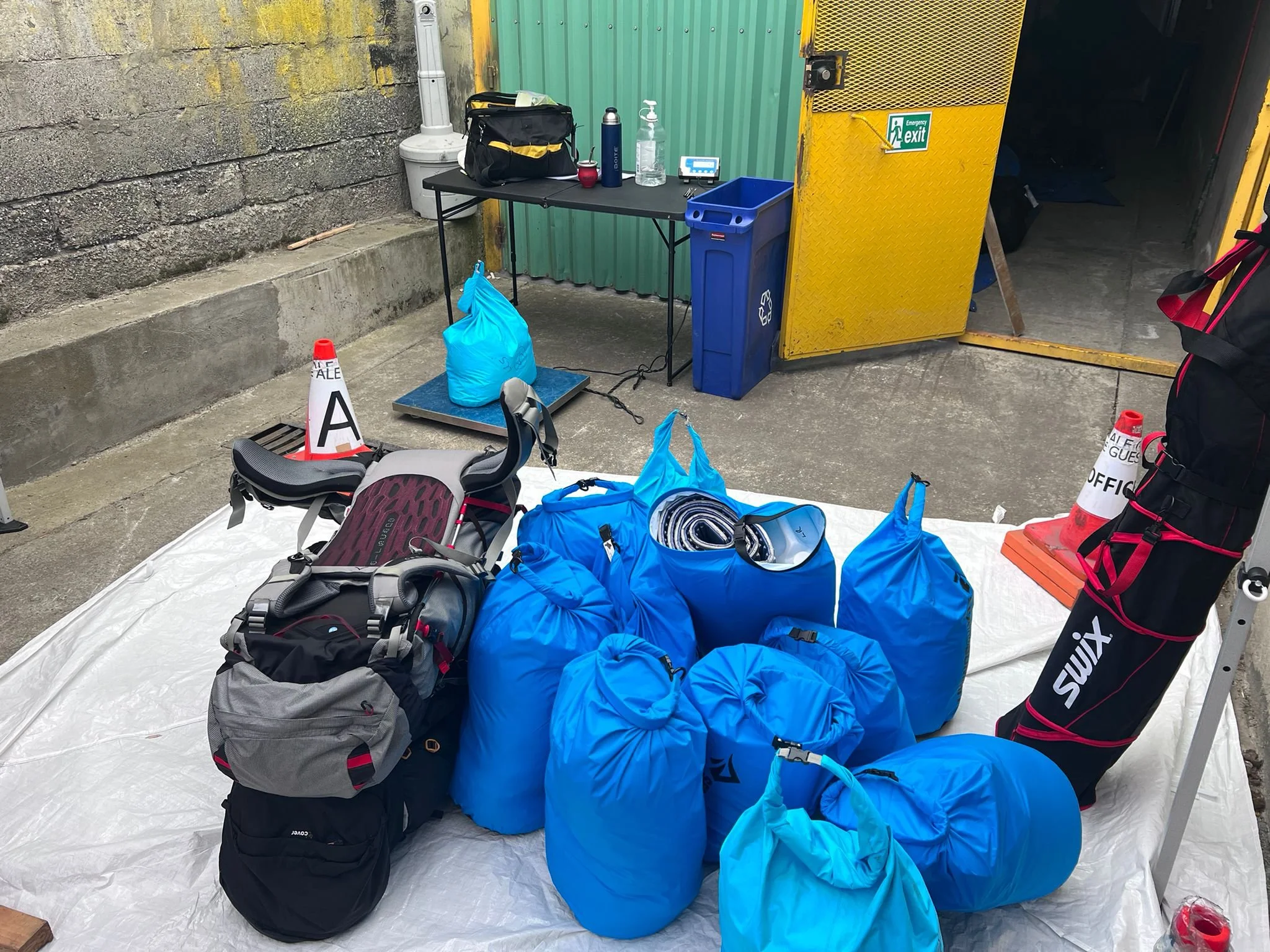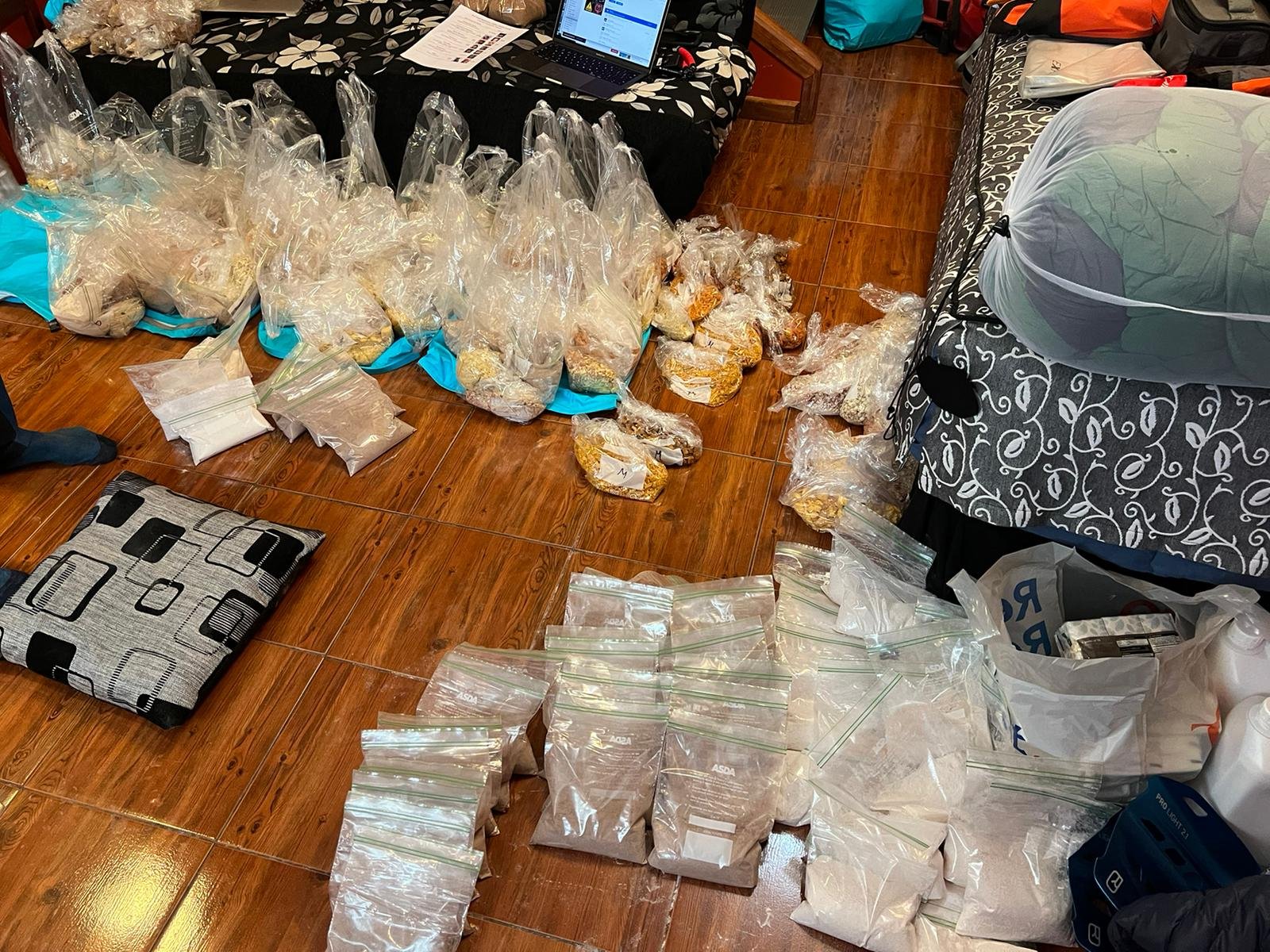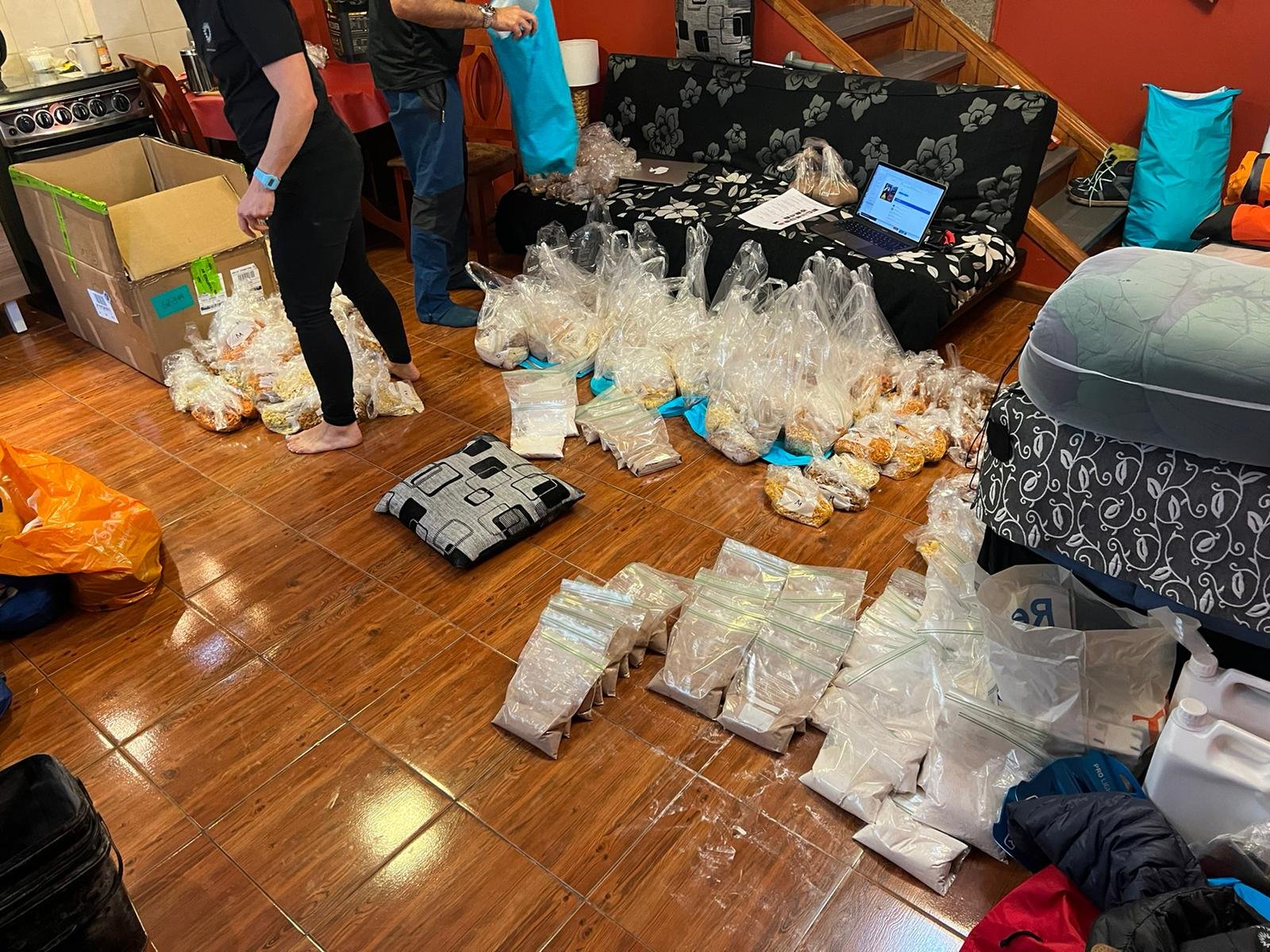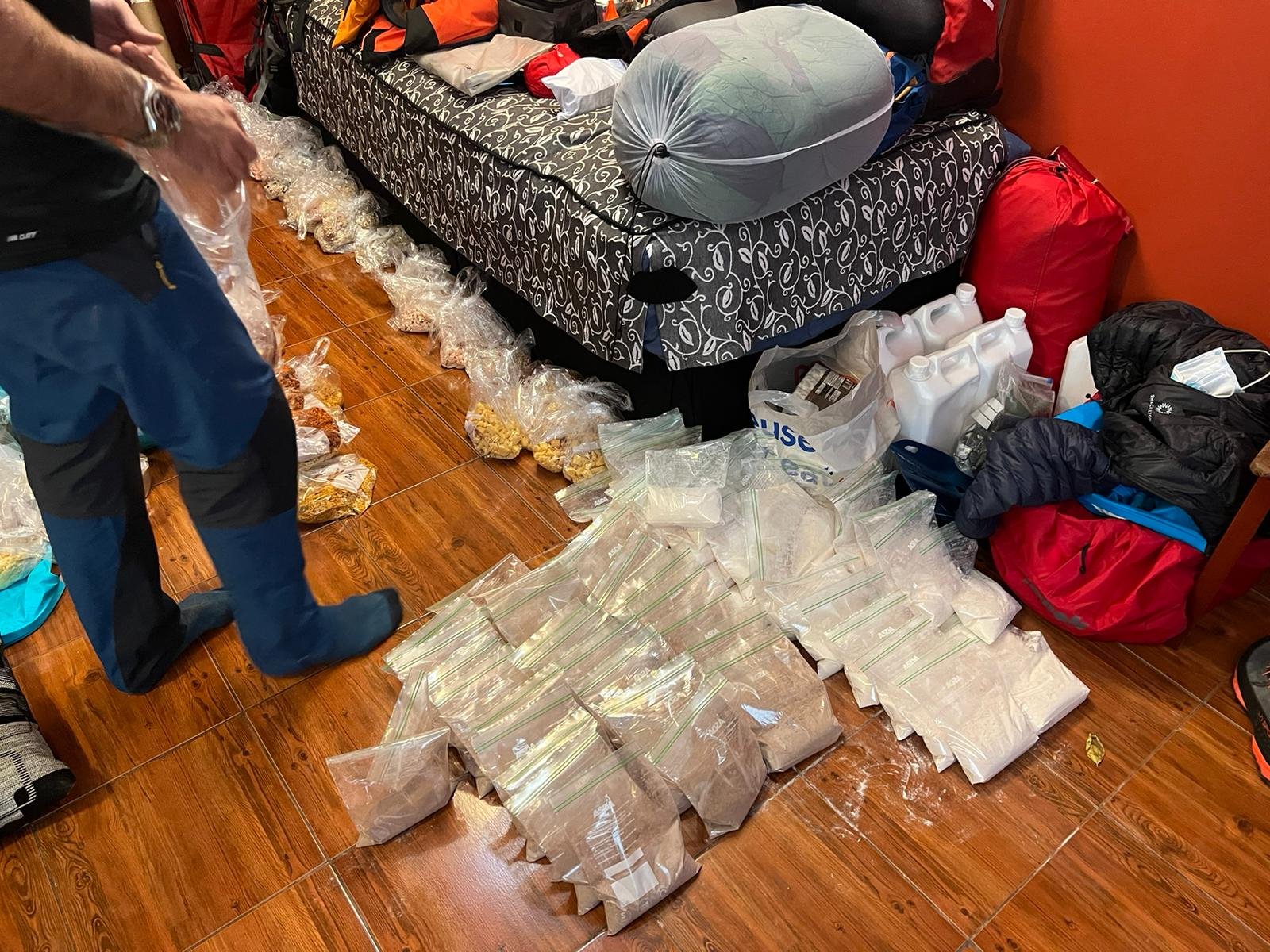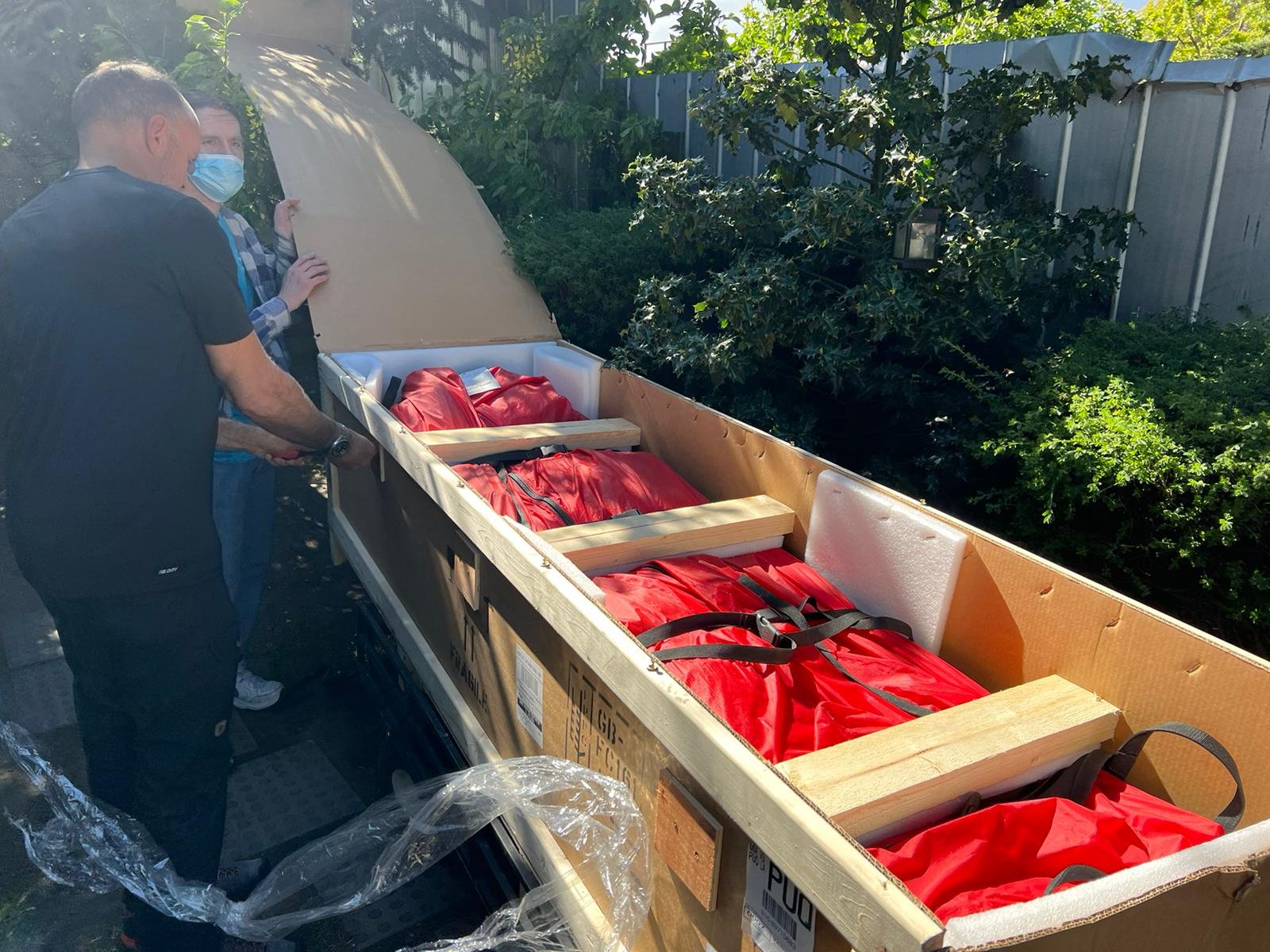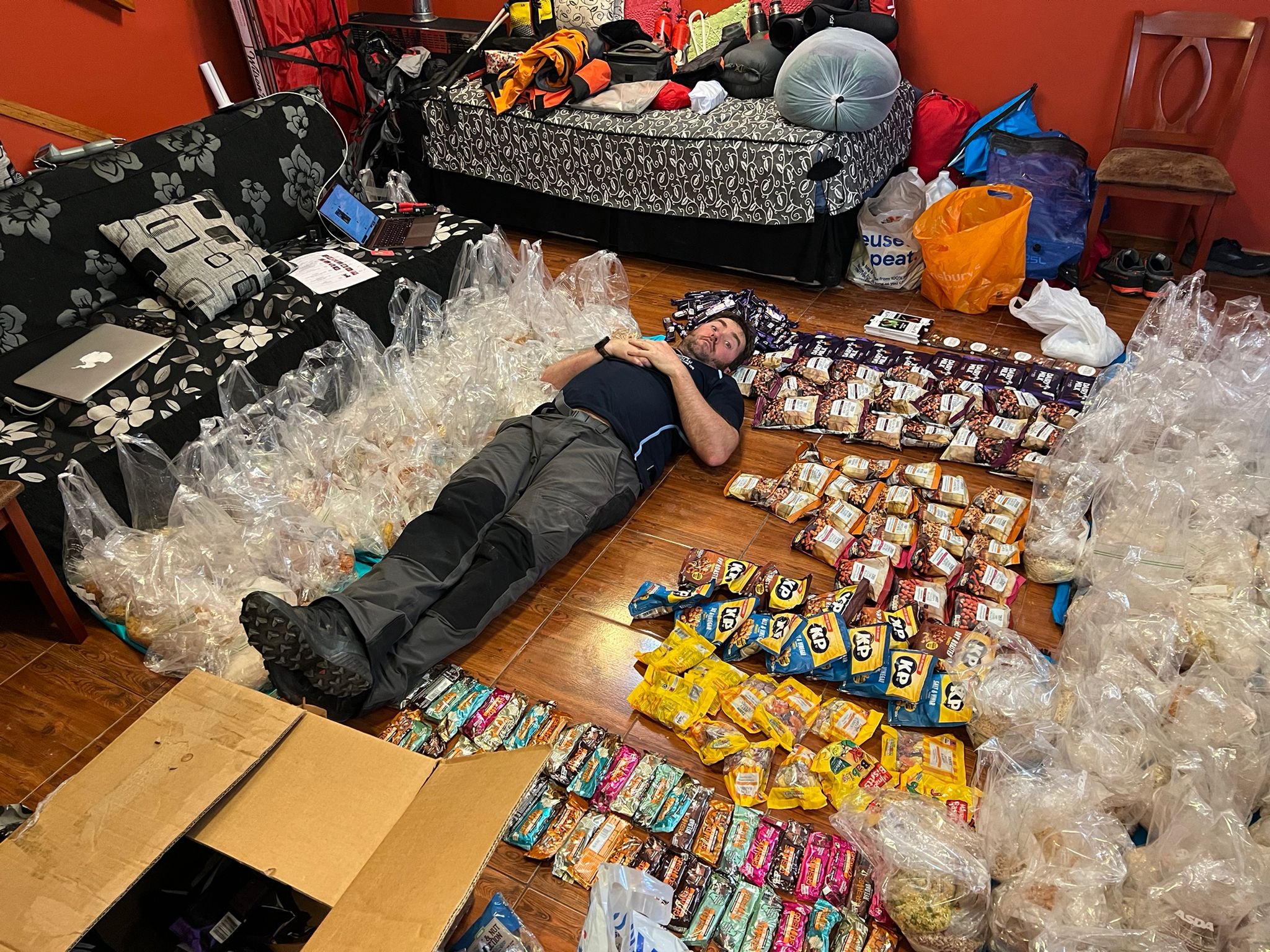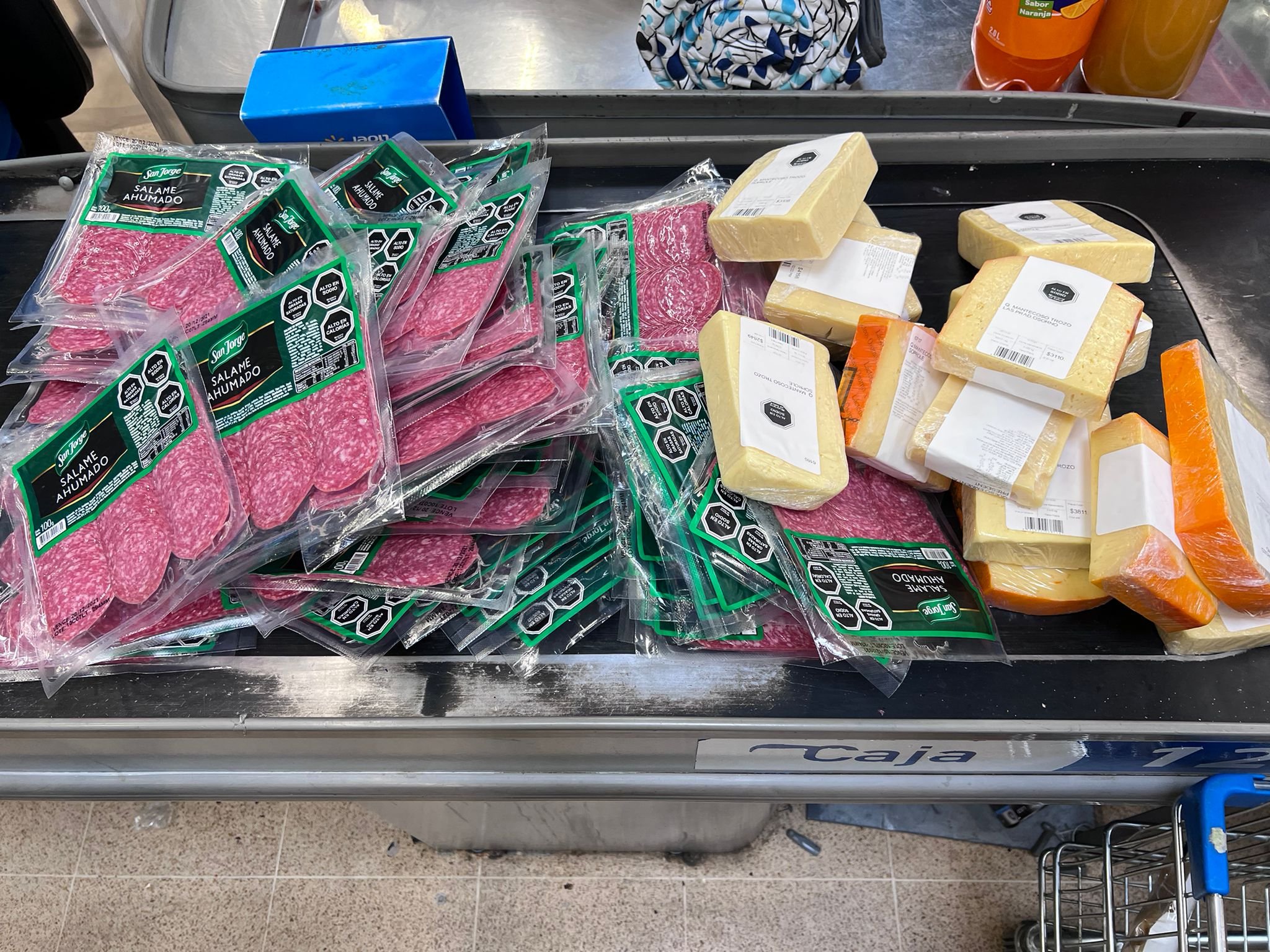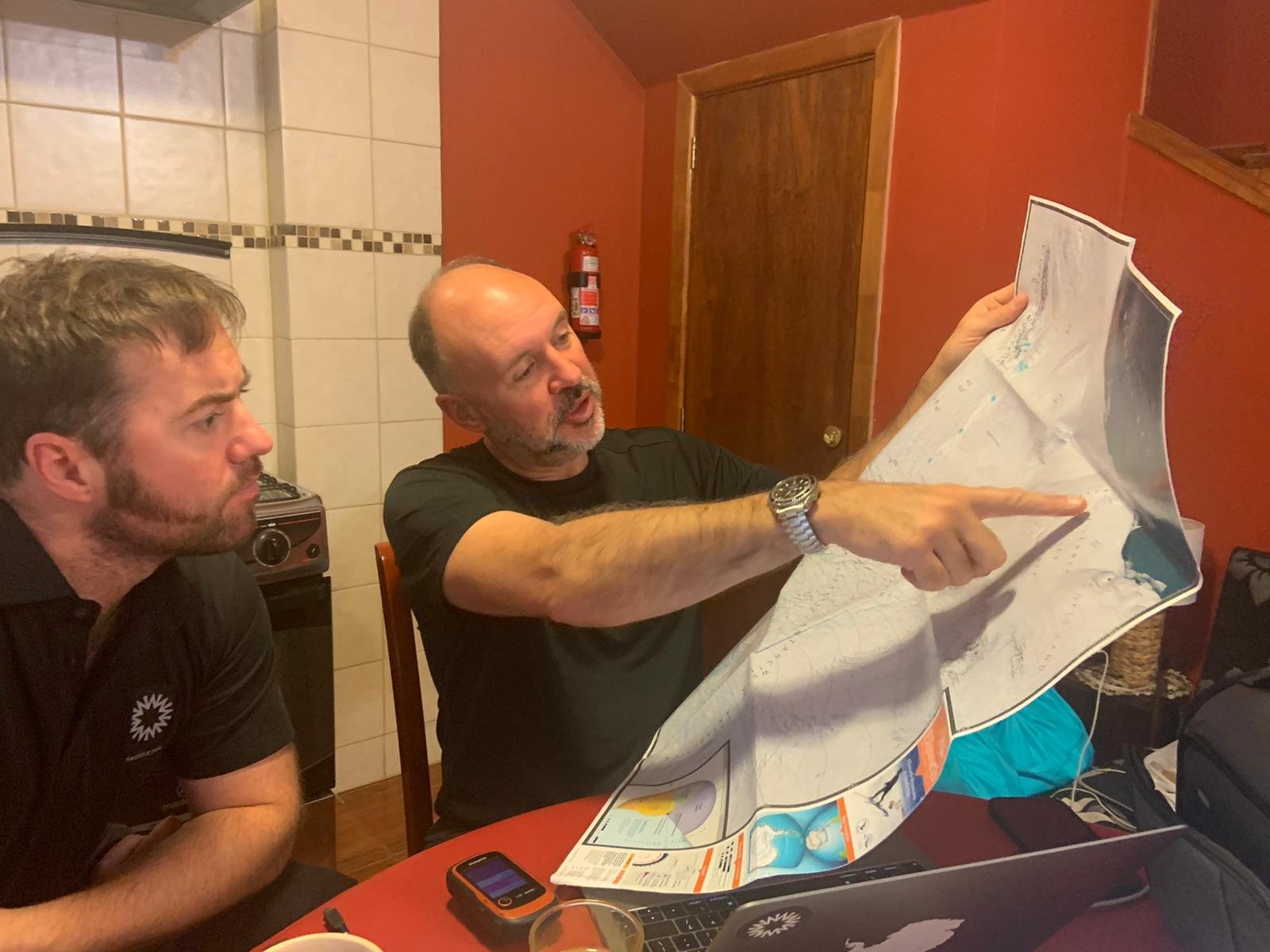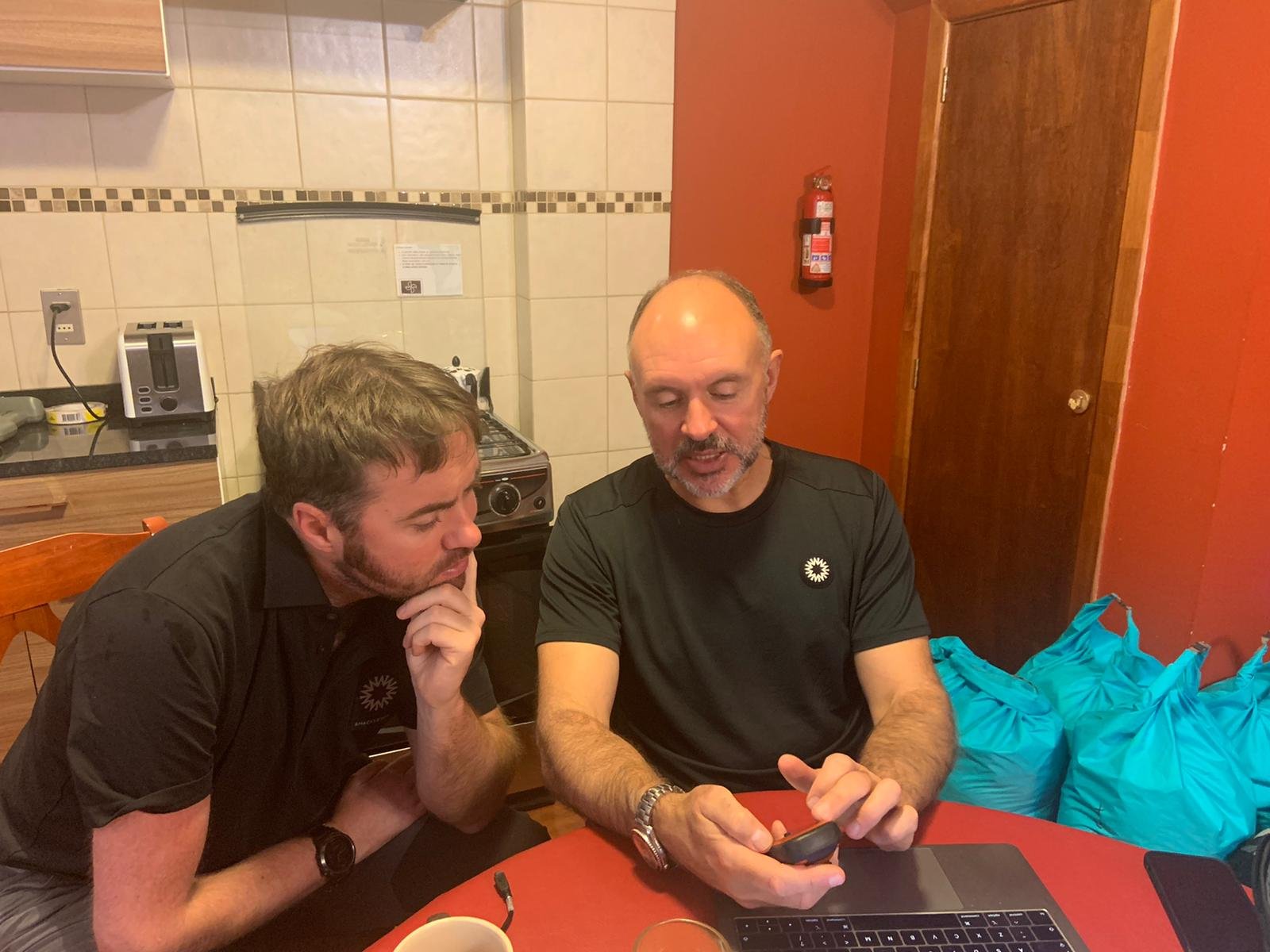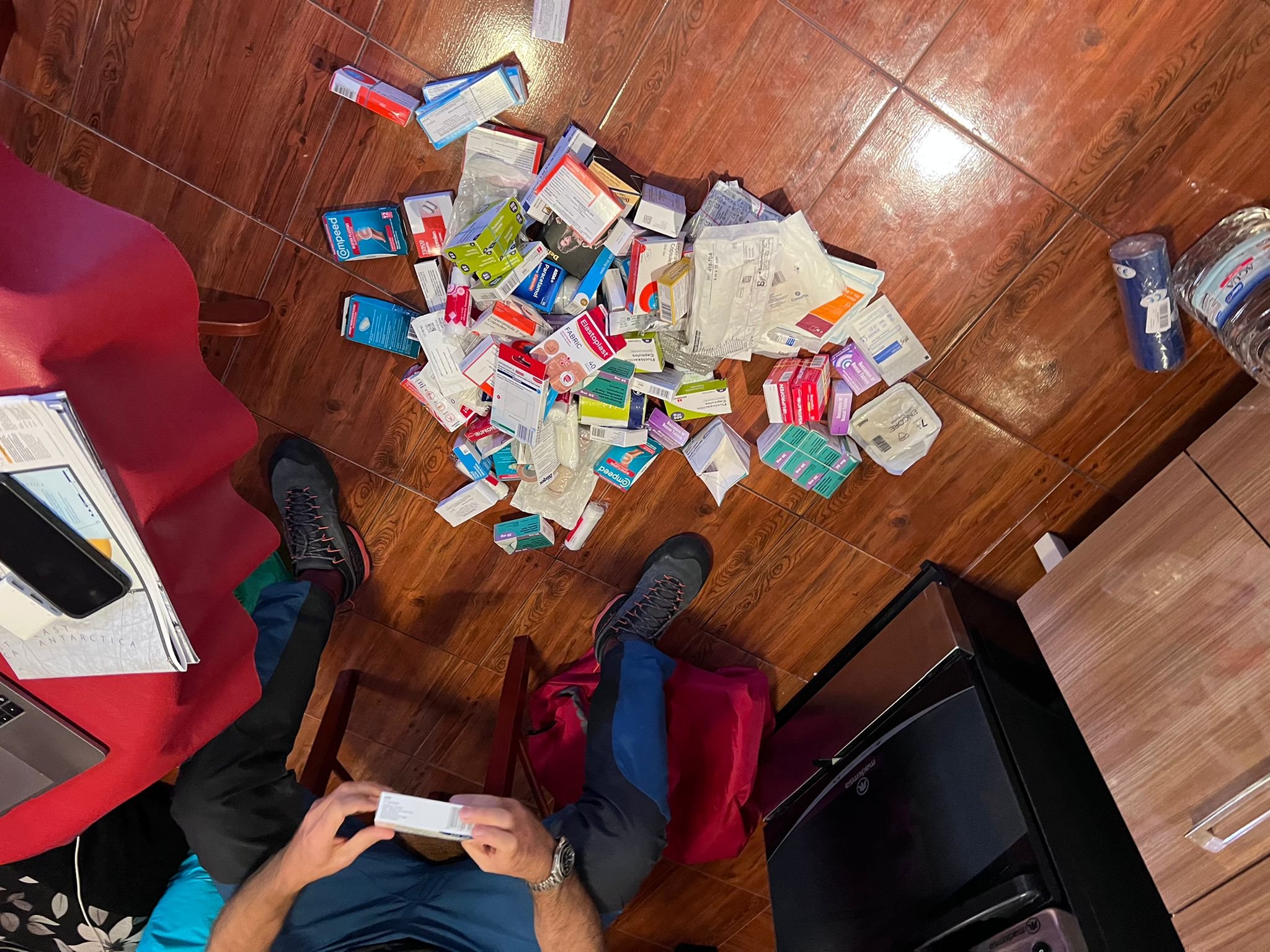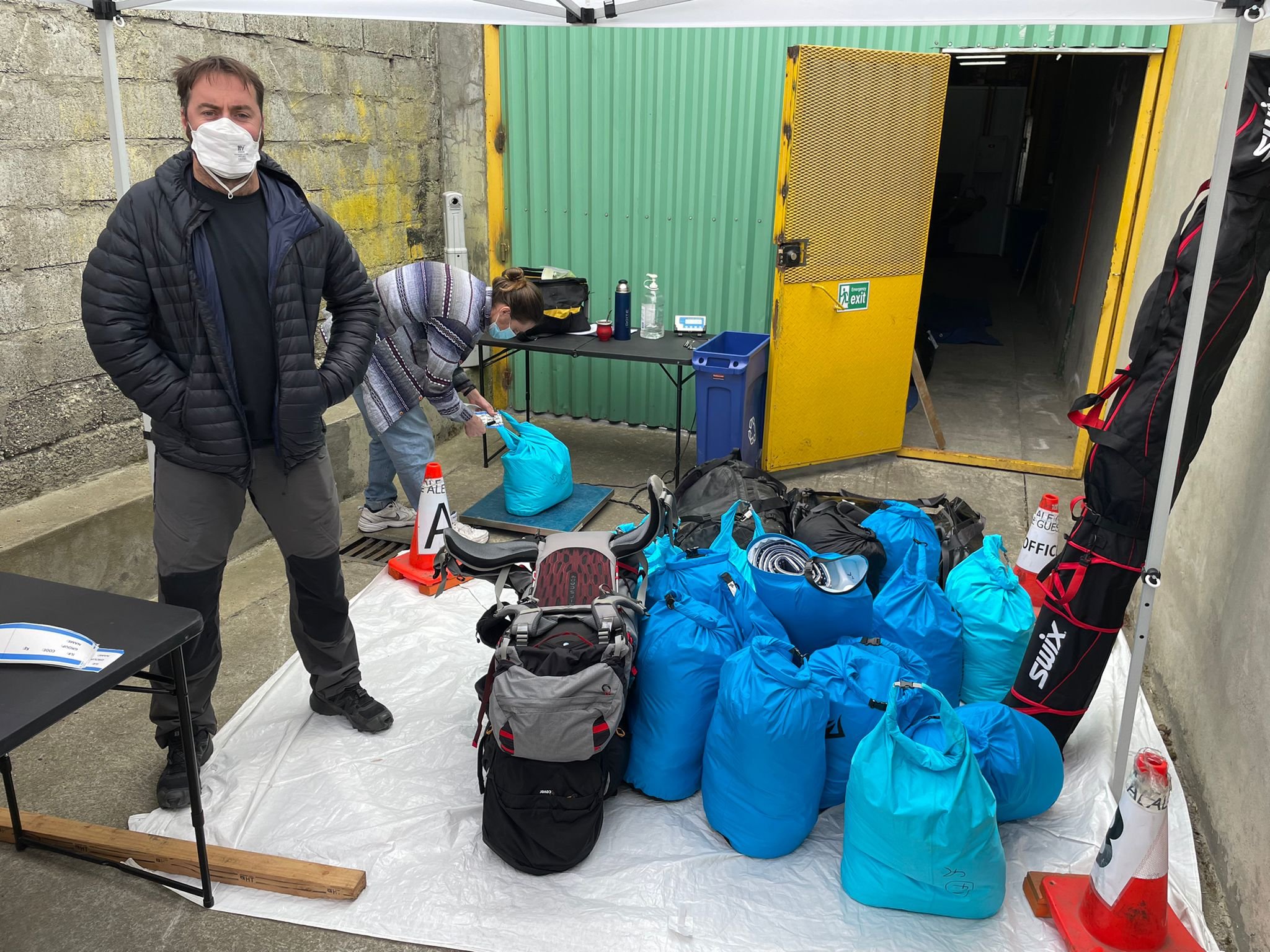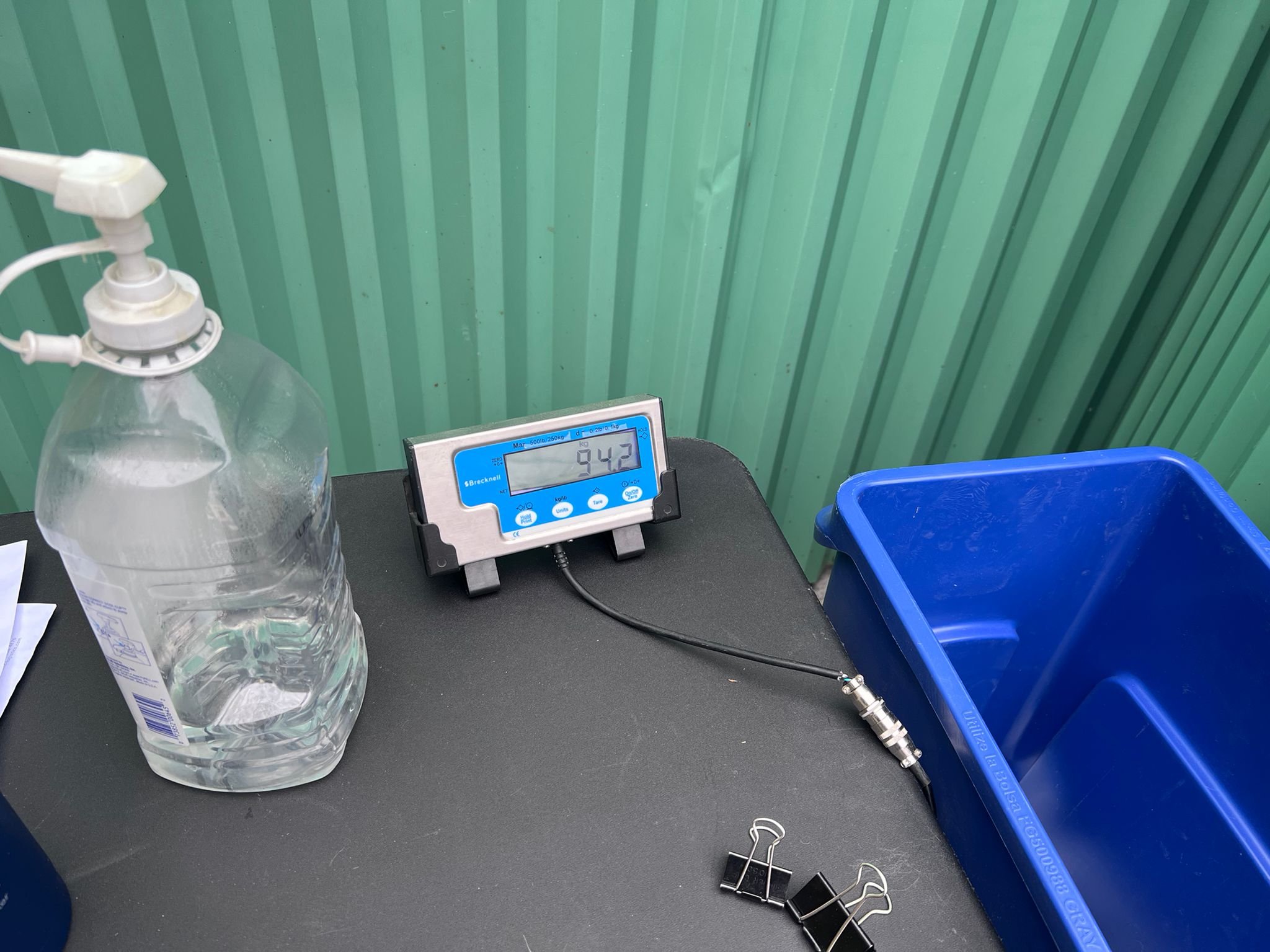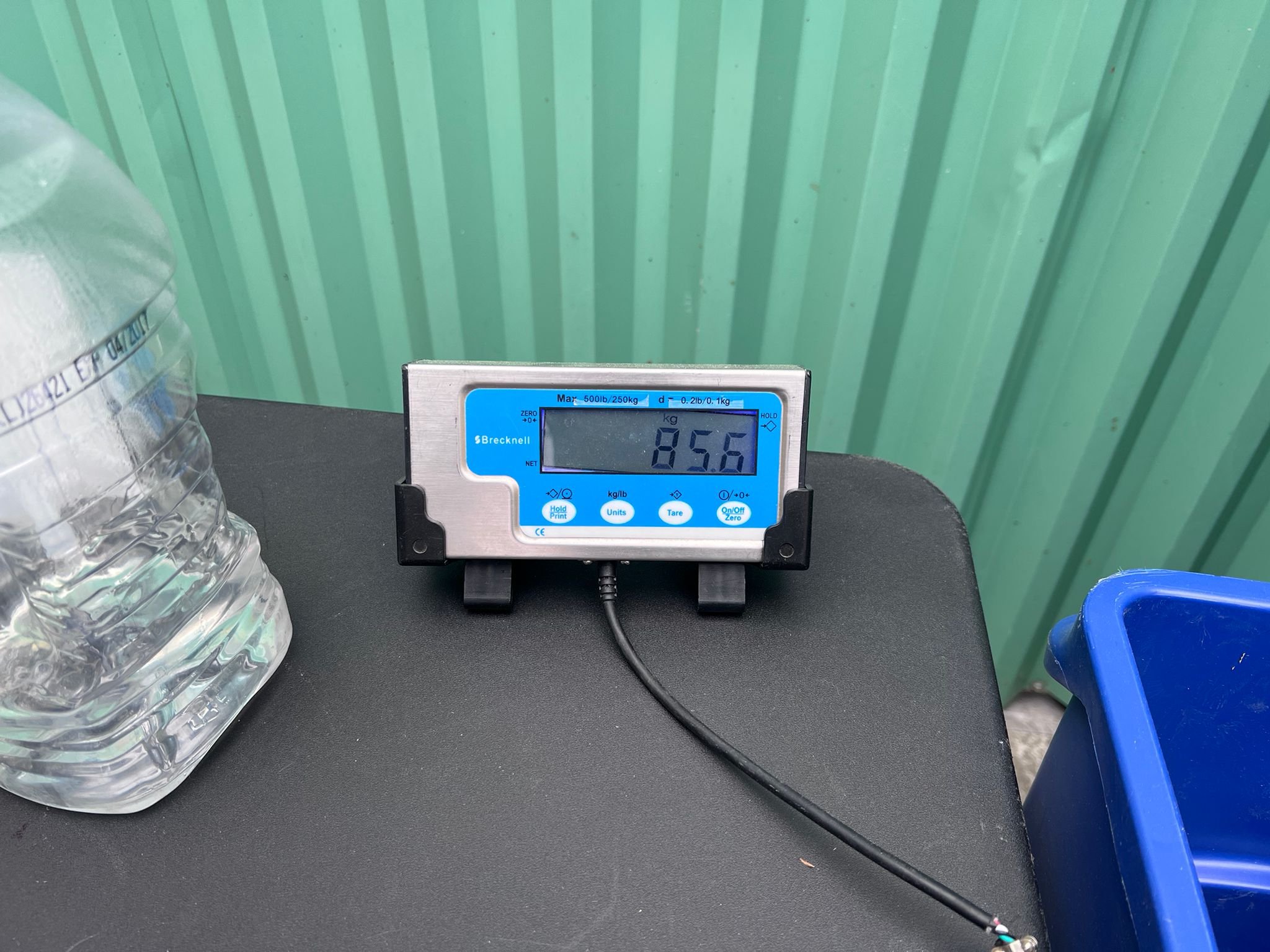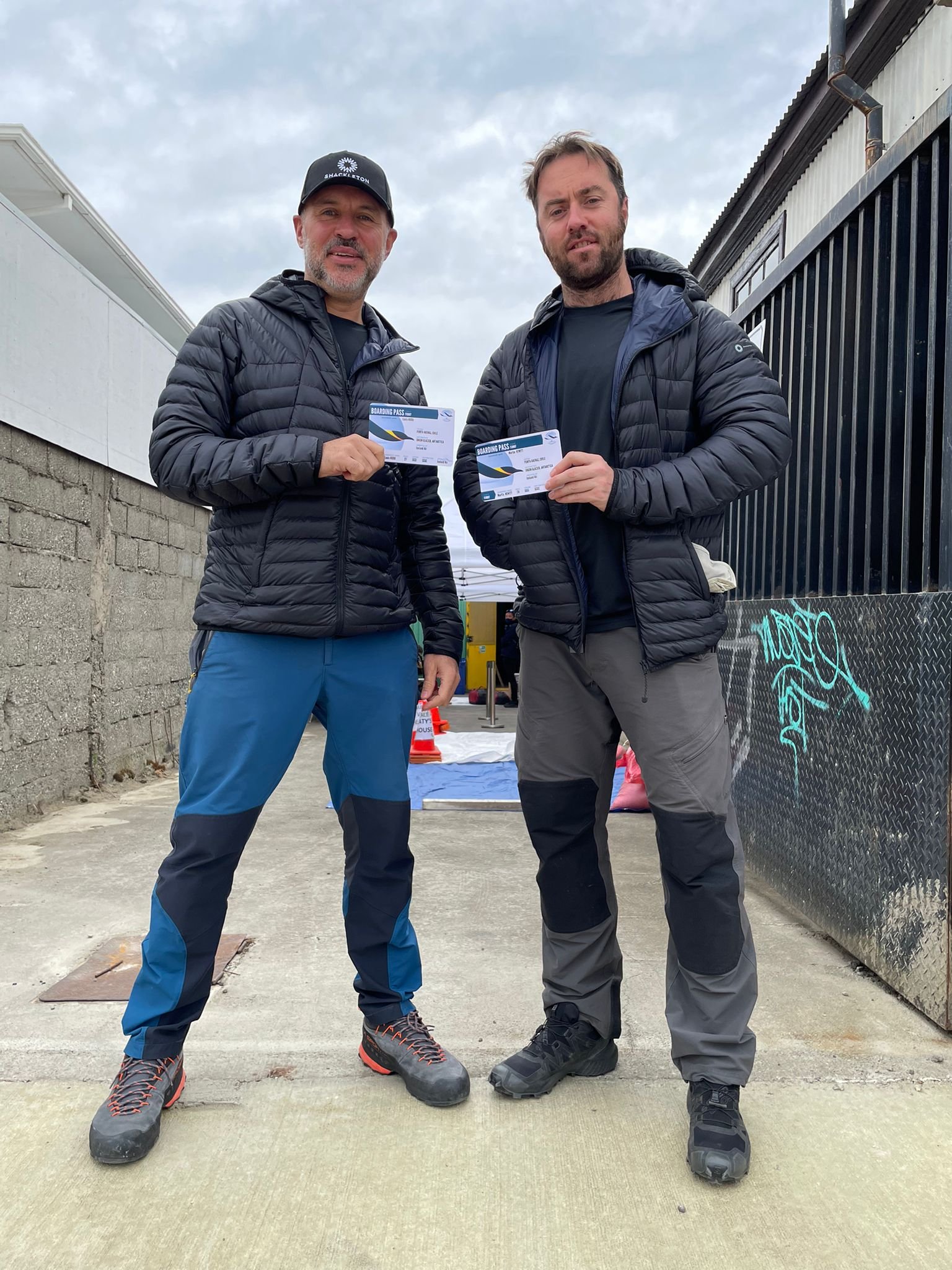● Hewitt aims to complete the 1,000KM polar trek in 45 days arriving at the South Pole ahead of the centenary of legendary polar explorer, Sir Ernest Shackleton’s death
● Hewitt and record-breaking polar explorer, Louis Rudd, (Director of Expeditions at Shackleton), will haul all the food and equipment needed for the mission in a 95kg pulk
● Trekking to the South Pole marks the penultimate phase of the Adaptive Grand Slam : Hewitt’s mission to climb the highest peak on every continent and walk to both poles to inspire others to push their boundaries and achieve their potential
● Hewitt sustained a life-changing injury during military service with the Parachute Regiment resulting in paralysis of his right arm
(November 2, 2021 – Oaxhaca, Chile): Martin Hewitt, founder of accessible exploring charity Adaptive Grand Slam and Louis Rudd, Director of Expeditions at Shackleton, have embarked on a world first polar mission which aims for Hewitt to become the first disabled person to reach the South Pole unsupported and unassisted from the edge of Antarctica.
Hewitt’s arrival at the South Pole will mark a significant step in the completion of the Adaptive Grand Slam (AGS), an adaptation of the infamous Explorers Grand Slam. The AGS has so far seen Hewitt and a team of disabled adventurers overcome adversity to summit the tallest peaks on every continent and trek to the Poles, to inspire others with life-long injuries and disabilities to achieve their own dreams. Throughout the series of challenges, Hewitt has been fundraising for the AGS foundation, which was established to select, train and develop disabled teams to empower them to tackle extreme expeditions and challenges, including Mount Everest, supported by professional expedition and challenge leaders.
In his Antarctica endeavour, Hewitt will be supported by British Expedition apparel and travel brand, Shackleton and will be guided by Louis Rudd, a record-breaking polar adventurer and Shackleton’s Director of Expeditions. Rudd is one of the most decorated polar explorers of the modern era and became the first Briton to traverse Antarctica solo, unsupported and unassisted in 2018.
Following months of meticulous nutrition planning, kit preparation, and extensive training designed to simulate Antarctica’s uniquely challenging conditions, Hewitt and Rudd will set off from Union Glacier with a goal of completing the 1,000KM trek in just 45 days.
As an unsupported and unassisted trek across a barren icy plateau, the pair will have to haul all the food and equipment needed for the polar mission on a specially-designed 95kg pulk. After reaching the Pole, Hewitt and Rudd will then attempt to climb Mount Vinson, at 4,829m the highest peak in Antarctica
To accomplish the gruelling challenge and withstand one of the coldest climates on earth, the team will be trekking using Shackleton’s Expedition Pulk Suit, specifically designed to protect them from the elements where temperatures can routinely reach -40°.
The Adaptive Antarctica Expedition is supported by Shackleton, Olympian Homes, Round Hill Capital, TSP Ventures and Blesma, the Limbless Veterans charity which Martin is a member of.The mission aims to raise funds for the AGS Foundation to enable other people with a registered disability to take part in their own extreme challenge supported by professional expedition leaders, in order to help members of the disabled community regain confidence, independence and meaningful occupation.
On his departure, Martin Hewitt said “After months of physical and mental preparation, I feel ready to take on this challenge and can’t wait to get a step closer to completing the Adaptive Grand Slam. I hope that by succeeding in this challenge, I can show people that you can achieve anything you set your mind to if you have support, drive and determination, and that a debilitating injury should never stand in your way. I’m really thankful to my sponsors: Shackleton, Olympian Homes, TSP Ventures and Round Hill Capital for their support so far and of course to my teammate Louis Rudd, for taking on this challenge by my side”.
Of the mission, Ian Holdcroft, co-founder of Shackleton said: “Martin Hewitt is a real force of nature. His grit and determination in the face of adversity and his desire to help others embodies everything our namesake, Sir Ernest Shackleton, stood for. We’re delighted to support his challenge with Shackleton Director of Expeditions Louis Rudd MBE as his guide and Shackleton extreme weather apparel for this record-breaking mission."
Mark Slatter, Founder and Chairman of Olympian Homes said “Having met Martin in 2012, in the Himalayas, amongst an elite group of injured ex servicemen attempting to summit Everest he stood out even then. None of the team were able to summit that year but there was no doubting that Martin would be back and he duly succeeded in 2019.
As lead sponsors of both the 2019 AGS Everest Expedition, the 2017 Aconcagua Expedition and now the South Pole , Mt Vincent 2021 Expedition, Martin embodies and personifies the success of having very clear objectives, detailed planning, endeavour , determination and resilience in overcoming the adversity of losing the full use of his body and a career he loved, whilst becoming an inspiration, and supporting others, who have suffered in a similar way.
As an example of the culture values that we at Olympian Homes aspire to there can be no finer example than Martin Hewitt, and we all wish him a safe and ‘enjoyable’ expedition.”
Michael Bickford, Founder and CEO of Round Hill Capital said “We are delighted to support Martin and the AGS team in their latest extreme challenge, walking unsupported to the South Pole. The Grand Slam is considered, amongst seasoned mountain climbers, the height of expedition achievement. The agility and innovation, the group will rely on to complete the challenge reflects everything we stand for at Round Hill Capital, Martin and his team inspire us to continue to break new ground and we wish them the very best of luck with the expedition.”
Chris Smith CEO TSP Ventures said “The Partners and staff at TSP Ventures have enjoyed sponsoring the Adaptive Grand Slam challenges where we see the substantial benefits that Martin and the AGS have on the lives of people suffering from injury. The Adaptive Grand Slam is a massive and inspiring undertaking and I know that it will inspire, not just those with life-changing injuries, but also those of us fortunate enough not to have gone through what he, and others like him, have gone through on our behalf.
...///...
NOTES TO EDITORS:
Adaptive Grand Slam
The Adaptive Grand Slam group exists to train and enable disabled adventurers to take on some of the most extreme expeditions and testing challenges on the planet and inspire others with life-long injuries and disabilities to achieve their goals. If you'd like to support the AGS foundation, please follow this link https://www.justgiving.com/ags-foundation
Shackleton
Shackleton designs and develops performance apparel for people living and working in the world’s extremes. Driven by exploration and innovation, our company is built on the life and values of polar titan Sir Ernest Shackleton and exists to inspire, prepare and equip people for the challenge. We design in London and work with the highest quality manufacturers in the UK, Italy and around the world. Fur-free and RDS-compliant, we are committed to continual improvement of our sustainability standards.
Olympian Homes
Olympian Homes was formed 26 years ago and has a history of mixed use development including speculative residential, retail, hotel, student accommodation and built to rent residential accommodation. It has developed successful partnerships with a number of blue chip partners including Marks and Spencer, Balfour Beatty, Travelodge, Brookfield and now the Goldman Sachs and Welcome Trust owned IQ Students.
Round Hill Capital
About Round Hill Capital Round Hill Capital is a leading global specialist real estate investment, development and asset management firm. Since inception in 2002, Round Hill Capital has acquired and repositioned for long-term institutional ownership over 135,000 residential units and student housing beds. Round Hill Capital is a responsible landlord of assets offering housing to a range of occupants, from students through to senior citizens. Round Hill Capital has an established track record of positive returns and invests in and asset manages real estate on behalf of some of the world’s leading institutions and private investors. Further information on Round Hill Capital is available at: www.roundhillcapital.com.
TSP Ventures
TSP Ventures is an Environmental technology Venture firm. We support environmental and climate tech start-ups and early- stage businesses with capital, connections, coaching and advice. Our core belief is that businesses must serve the long-term wellbeing of people and of the Earth and we strongly believe that having a noble purpose and making money should not be viewed as mutually exclusive.
For more information please contact All Conditions Media:
Lucy Hewson - Lucyh@allconditionsmedia.com
// FOLLOW THE CHALLENGE //
A live map will be available when the expedition starts, currently scheduled for the 14th November.




